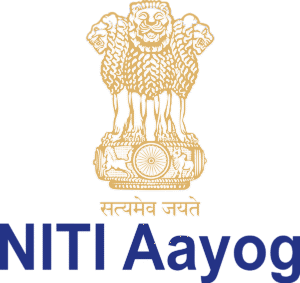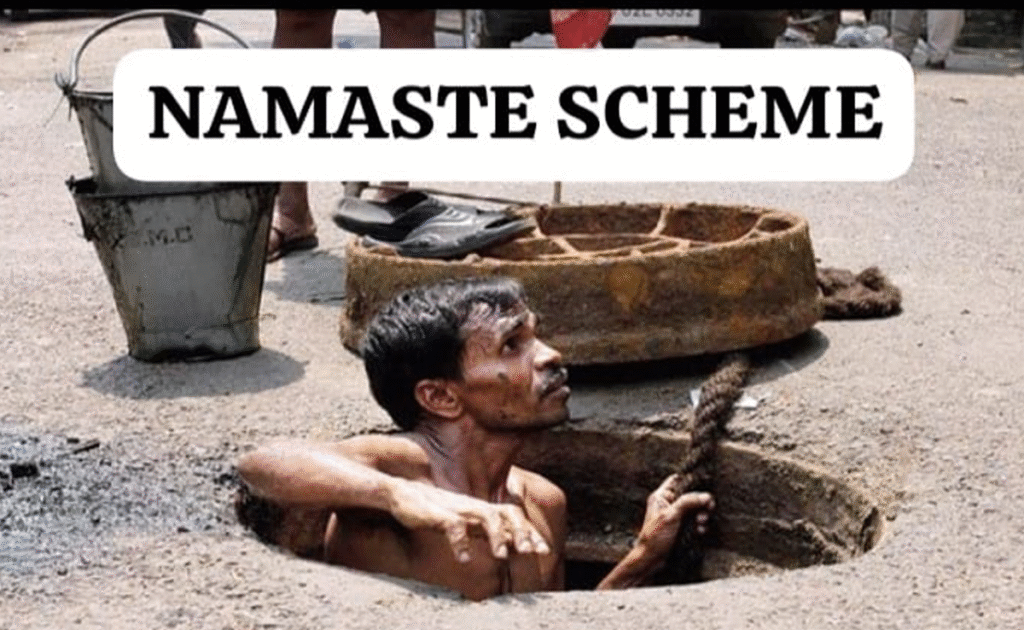14566 – National Helpline Against Atrocities
14567 – National helpline for senior citizens
112 – Women helpline
number
1098 – Helpline for children in distress

202501057001641



The NAMASTE Scheme (National Action for Mechanized Sanitation Ecosystem) is a joint initiative of the Ministry of Social Justice & Empowerment (MoSJE) and the Ministry of Housing and Urban Affairs (MoHUA), Government of India. The scheme is designed to achieve the goal of zero fatalities in sanitation work, ensuring the dignity, safety, and welfare of sanitation workers involved in hazardous cleaning activities.
The scheme focuses on the mechanization of sewer and septic tank cleaning, thereby eliminating manual scavenging and hazardous sanitation practices. NAMASTE also aims to provide alternative livelihood opportunities, skill development, health coverage, and financial security to sanitation workers and their families.
To ensure safety and dignity of sanitation workers through mechanization of sanitation operations
To prevent deaths during hazardous cleaning of sewers and septic tanks
To rehabilitate sanitation workers and provide alternative livelihoods where necessary
To promote skill development and upskilling in the mechanized sanitation sector
To ensure financial inclusion, health coverage, and social security benefits for sanitation workers
To eliminate manual scavenging and hazardous cleaning practices through awareness, training, and enforcement
Sewer and septic tank workers (current and identified)
Sanitation workers engaged in high-risk and manual cleaning operations
Sanitation workers who have lost livelihood due to mechanization
Family members of sanitation workers for alternative livelihood support
Identified workers from SC, ST, OBC, EBC, and other vulnerable communities
Identification of Sanitation Workers
Surveys to identify sanitation workers engaged in hazardous cleaning
Creation of a centralized database through the scheme portal
Skill Development and Capacity Building
Training programs on safe sanitation practices and mechanized cleaning technologies
Certification for sanitation workers through recognized training partners
Counseling and capacity-building programs for alternative livelihoods
Livelihood Assistance
Financial support for setting up sanitation-related enterprises (such as equipment leasing, cleaning services)
Facilitation of bank linkages and credit through self-employment schemes
Provision of entrepreneurship opportunities under the scheme
Health and Occupational Safety
Health insurance coverage under schemes like Ayushman Bharat PM-JAY
Regular health check-ups and medical support
Provision of personal protective equipment (PPE) and safety gear
Social Security and Financial Inclusion
Coverage under EPFO, ESIC, and other relevant social security schemes
Facilitation of bank accounts, insurance, and pension benefits
Access to welfare schemes targeted at marginalized groups
Technology Promotion
Encouraging the adoption of state-of-the-art sewer and septic cleaning technologies
Supporting municipalities in mechanization and procurement of equipment
Reducing human intervention in hazardous sanitation work through innovation
Implemented in partnership with Urban Local Bodies (ULBs), NGOs, and state governments
Centralized monitoring through a dedicated digital portal for transparency and tracking
Alignment with Swachh Bharat Mission-Urban 2.0 and other urban development programs
Coordination with financial institutions, industry partners, and technology providers
Complete elimination of manual scavenging and hazardous sanitation work
Improved health, safety, and dignity of sanitation workers
Sustainable livelihoods and income enhancement through skill-building and enterprise support
Increased adoption of modern, mechanized sanitation practices
Enhanced social inclusion and financial security for marginalized communities
Registration through the NAMASTE portal (when operationalized at the ULB level)
Identification and verification by Urban Local Bodies
Enrollment in training, health, and social security programs through scheme partners
Application through district social welfare departments or ULBs for livelihood support
Access to benefits coordinated through MoSJE and MoHUA in collaboration with state authorities


The SOCIAL JUSTICE & EMPOWERMENT COUNCIL OF INDIA (SECI) is a dedicated Work under the Ministry of Social Justice & Empowerment, Government of India, focused on creating nationwide promotion and awareness about social justice schemes and welfare initiatives by the awareness of India.
All Rights Reserved © SECI